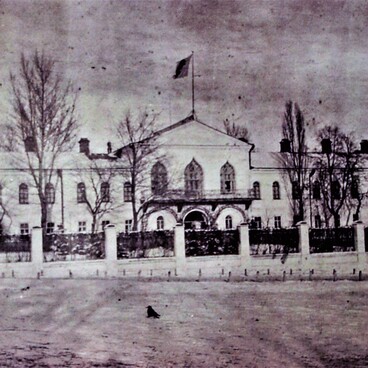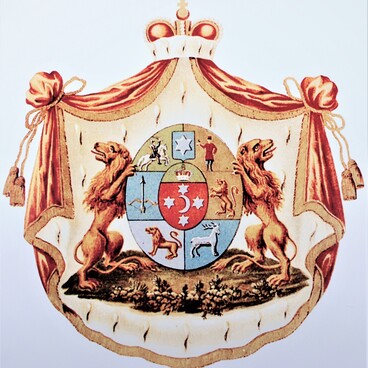The photo shows the facade of the Yusupov Palace in the Arkhangelskoye estate near Moscow.
According to a plaque, which restorers discovered recently under the building’s basement, the construction of the palace began in 1784. The project of the building was ordered by Prince Nikolai Golitsyn, who owned the estate at the time, to architect Jacques Jacob Guerne.
In Arkhangelskoye, Guerne’s project was carried out, developed and supplemented by the Russian masters, including Moscow architects Osip Bove, Stepan Melnikov, Yevgraf Tyurin, and the serf architect Vasily Strizhakov.
Researchers suggest that Guerne did not even come to Russia. His absence is indicated by the fact that during the construction the architects rejected to build the basement and the circular cylindrical vault around the central pillar under the main circular hall. All the work was supervised by the Italian Giacomo Trombar, who came to Russia in 1779 along with the architect Giacomo Quarenghi. The palace was under construction for almost 25 years, and Golitsyn never saw the interiors finished as he died in 1809. The widow of the prince had to sell the estate.
In October 1810, Arkhangelskoye became the property of Prince Nikolay Yusupov. By the 1820s, the Palace ensemble had finally formed, and it included the manor house called the “Big House, ” colonnades, corner wings and ceremonial front yard entrance arch. At the same time, the interior decorations were developed. The ceiling and wall paintings were done by Giuseppe Artaripo, a Swiss-born artist nicknamed Colombo, and Pietro Ruga and his assistants. In most of the state halls the masters used the grisaille technique, imitating texture in relief by means of one color shades. The interiors were decorated in the Empire style characterized by geometric and floral ornaments, antique symbols and Egyptian motifs.
From 1896 to 1914, the Palace ensemble was perfected and supplemented by architects Alexander Stepanov, Nikolai Sultanov and Peter Harko. The interior decoration was restored by the painter Ignaty Nivinsky.
Until the October Revolution, the last owner of the palace and the estate was Princess Zinaida Yusupova. In 1918, the estate was nationalized and Arkhangelskoye became a museum. It welcomed first guests in 1919.
According to a plaque, which restorers discovered recently under the building’s basement, the construction of the palace began in 1784. The project of the building was ordered by Prince Nikolai Golitsyn, who owned the estate at the time, to architect Jacques Jacob Guerne.
In Arkhangelskoye, Guerne’s project was carried out, developed and supplemented by the Russian masters, including Moscow architects Osip Bove, Stepan Melnikov, Yevgraf Tyurin, and the serf architect Vasily Strizhakov.
Researchers suggest that Guerne did not even come to Russia. His absence is indicated by the fact that during the construction the architects rejected to build the basement and the circular cylindrical vault around the central pillar under the main circular hall. All the work was supervised by the Italian Giacomo Trombar, who came to Russia in 1779 along with the architect Giacomo Quarenghi. The palace was under construction for almost 25 years, and Golitsyn never saw the interiors finished as he died in 1809. The widow of the prince had to sell the estate.
In October 1810, Arkhangelskoye became the property of Prince Nikolay Yusupov. By the 1820s, the Palace ensemble had finally formed, and it included the manor house called the “Big House, ” colonnades, corner wings and ceremonial front yard entrance arch. At the same time, the interior decorations were developed. The ceiling and wall paintings were done by Giuseppe Artaripo, a Swiss-born artist nicknamed Colombo, and Pietro Ruga and his assistants. In most of the state halls the masters used the grisaille technique, imitating texture in relief by means of one color shades. The interiors were decorated in the Empire style characterized by geometric and floral ornaments, antique symbols and Egyptian motifs.
From 1896 to 1914, the Palace ensemble was perfected and supplemented by architects Alexander Stepanov, Nikolai Sultanov and Peter Harko. The interior decoration was restored by the painter Ignaty Nivinsky.
Until the October Revolution, the last owner of the palace and the estate was Princess Zinaida Yusupova. In 1918, the estate was nationalized and Arkhangelskoye became a museum. It welcomed first guests in 1919.

